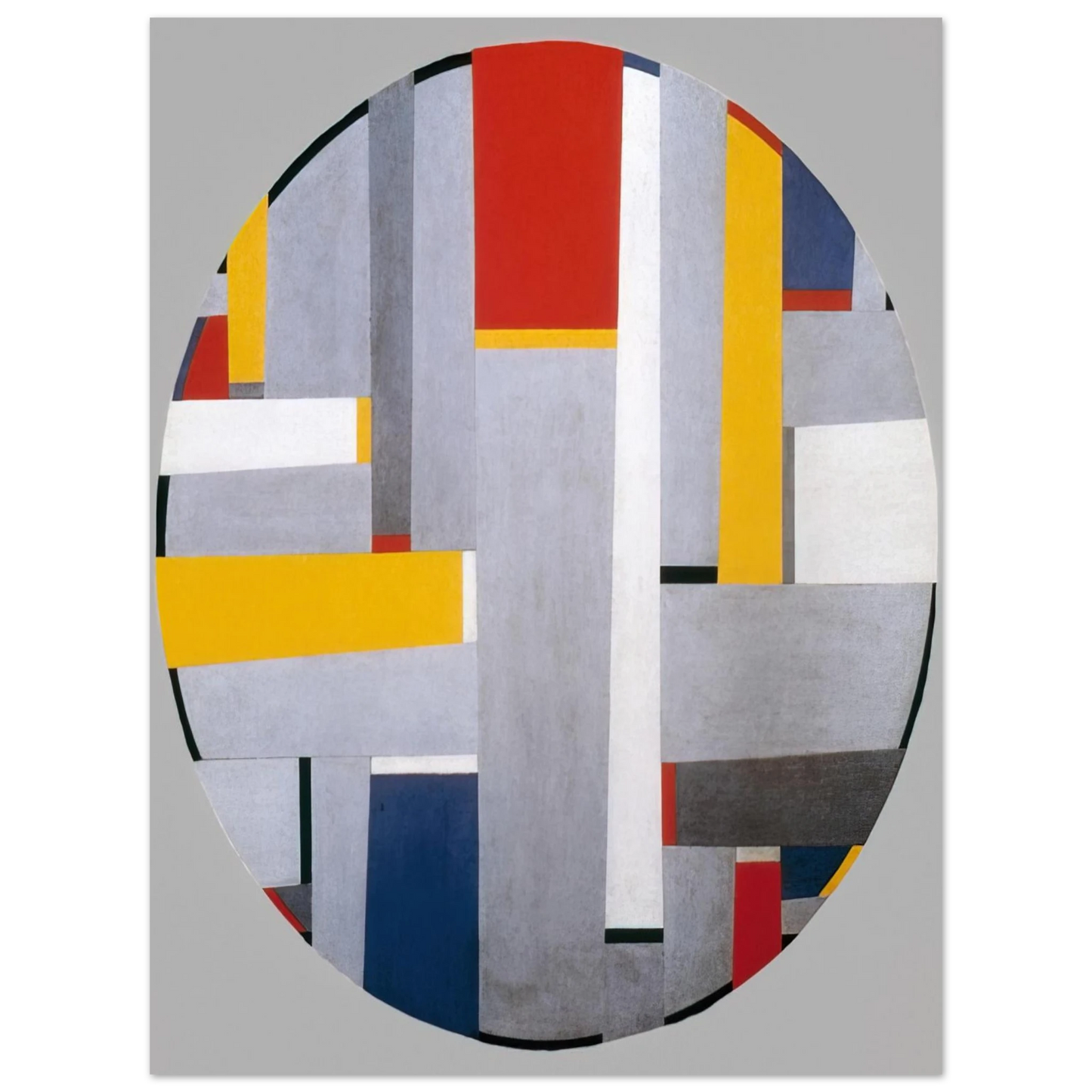RedKalion
Fritz Glarner - Relational Painting, Tondo #36 - 1955 75x100 cm / 30x40inches Fine Art Poster
Fritz Glarner - Relational Painting, Tondo #36 - 1955 75x100 cm / 30x40inches Fine Art Poster
Couldn't load pickup availability
Discover more in our: Fritz Glarner Poster Collection
Discover our Fine Art Posters - Iconic artworks with vivid colors using using our fine art 12-color printing technology. Perfect for art lovers and designers alike.
- Color Vibrancy: Our 12-color fine art printing technology delivers vivid, accurate colors with stunning depth, far beyond standard 4-color inkjet printing technology.
- Paper Finishing: Smooth matte finish for a clean, glare-free display.
- Paper Weight: 200 gsm (80 lb), thickness: 0.26 mm (10.3 mils).
- Available Sizes: Offered in a variety of sizes to fit any space or frame.
- Eco-Friendly Materials: Printed on environmentally conscious, FSC-certified paper.
No minimum orders, printed and shipped on demand to guarantee freshness and customization for every order.
Discover the transformative power of art for your home or office with stunning fine art posters. Posters offer an accessible and versatile way to infuse your space with personality, color, and cultural sophistication. Whether you are looking to refresh a living room, add character to a bedroom, or inspire creativity in a workspace, high-quality wall art prints provide endless possibilities for interior design. From contemporary abstract art to classic masterpieces, fine art posters allow you to curate your environment with museum-quality reproductions without the prohibitive cost of original artwork. One exceptional example of how a carefully chosen fine art poster can elevate any decor is the "Fritz Glarner - Relational Painting, Tondo #36 - 1955" print. This captivating piece brings the intellectual rigor and aesthetic balance of geometric abstraction right into your home. A large format art print, measuring an impressive 75x100 cm or 30x40 inches, this poster is designed to be a focal point, making a significant visual statement. Its generous size ensures that the intricate details and masterful composition of Glarner's work are fully appreciated, offering a window into a world of structured harmony and dynamic relationships. Fritz Glarner, a Swiss-American abstract painter, is renowned for his unique contribution to geometric abstraction, often associated with the Neo-Plasticist movement championed by Piet Mondrian. While clearly influenced by Mondrian's strict grids and primary colors, Glarner developed his own distinct system, which he termed "Relational Painting." Unlike Mondrian's purely orthogonal compositions, Glarner introduced diagonals and a more complex interplay of forms and colors within his grid, creating a sense of tension, movement, and a continuous visual dialogue between elements. His work is less about absolute purity and more about the dynamic relationships between forms, spaces, and lines. "Relational Painting, Tondo #36 - 1955" perfectly embodies Glarner's signature approach. The term "Tondo" refers to its circular format, a historically significant shape in art, often associated with Renaissance masterpieces. For an artist working with geometric abstraction, embracing the tondo presents a unique challenge and opportunity. The circular perimeter introduces an external curve that interacts with the internal rectilinear grid, creating a fascinating push and pull between two distinct geometric systems. This interaction is central to the "relational" aspect of the painting, as the straight lines and rectangular planes must adapt and respond to the encompassing circle, demonstrating a sophisticated visual conversation. In Tondo #36, Glarner meticulously constructs a complex network of vertical, horizontal, and diagonal lines that divide the circular canvas into an array of smaller, interlocking planes. These planes are then filled with a carefully considered palette, typically characteristic of Neo-Plasticism, featuring primary colors like red, blue, and yellow, alongside achromatic tones of black, white, and various grays. However, Glarner's use of color is not merely decorative; it is integral to the painting's structure and dynamism. Each color block and line segment is precisely placed to create balance, rhythm, and an illusion of depth and movement across the flat surface. The varying sizes and proportions of the colored areas contribute to a sense of controlled energy, where no single element dominates, but all coexist in a harmonious yet vibrant relationship. The year 1955 places this work firmly in the mid-20th century, a period of intense artistic experimentation and the further development of abstract expression. Glarner's "Relational Painting" series can be seen as a thoughtful counterpoint to the more gestural and emotive abstract art of the time, offering a vision of order, precision, and intellectual clarity. His work suggests that beauty and profound meaning can be found in structured systems and the logical arrangement of form and color. Owning a fine art poster of "Fritz Glarner - Relational Painting, Tondo #36 - 1955" is more than just acquiring a piece of decor; it's an opportunity to live with a significant work of modern art. The high-quality reproduction ensures that the subtleties of Glarner's color choices and the precision of his lines are faithfully captured. This large abstract art print serves as an instant conversation starter, inviting viewers to explore its intricate design and contemplate the relationships within its structure. It is an ideal choice for anyone seeking sophisticated wall decor, a unique gift for an art lover, or simply a way to introduce a touch of timeless, elegant abstraction into their environment. Transform your space and inspire your mind with the captivating beauty and intellectual depth of Glarner's Relational Painting.
Share

